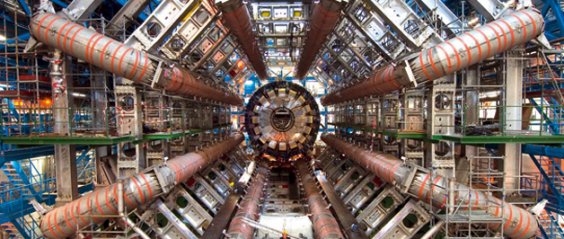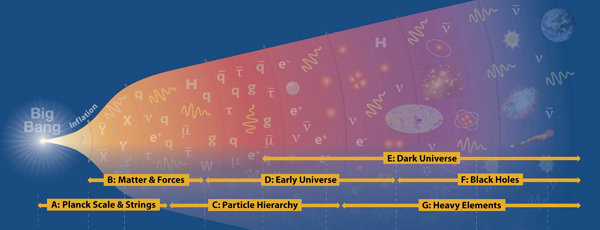
- The largest scientific instrument ever built: the ATLAS-detector at CERN, just before its completion. // © CERN
One of the central research issues in Research Area B is Supersymmetry (SUSY). Although the standard model of particle physics with 12 elementary particles and the known fundamental forces provides an irresistibly simple concept which is well documented by experimental evidence, we still do not know exactly how particles and the four fundamental forces relate to one another.
SUSY solves the problem by allocating one heavy super particle to each of the known elementary particles. SUSY doubles the number of currently known elementary particles – an increase gladly accepted by science. After all, by means of SUSY the forces and matter can be included in a uniform, mathematical model. Furthermore, SUSY could be of help in a series of cosmological problems, for instance in the question as to how the proven asymmetry of matter and antimatter has developed (see Research Area C).
Dark matter provides another example. It is known from astronomical observations and calculations that (apart from the known matter in stars and galaxies) there must be yet another type of matter that has so far remained undiscovered (see Research Area E). SUSY, with its new particles, offers a neat solution to this problem.
For this reason, scientists from Research Area B participate in large international experiments such as the LHC at CERN where they want to capture super-symmetrical particles. Cluster researchers have participated in the design and construction of the ATLAS-detector at CERN. Moreover, these scientists will also be substantially involved in the development of a network of high-performance computers, so that data received from the ATLAS detector can be evaluated.





